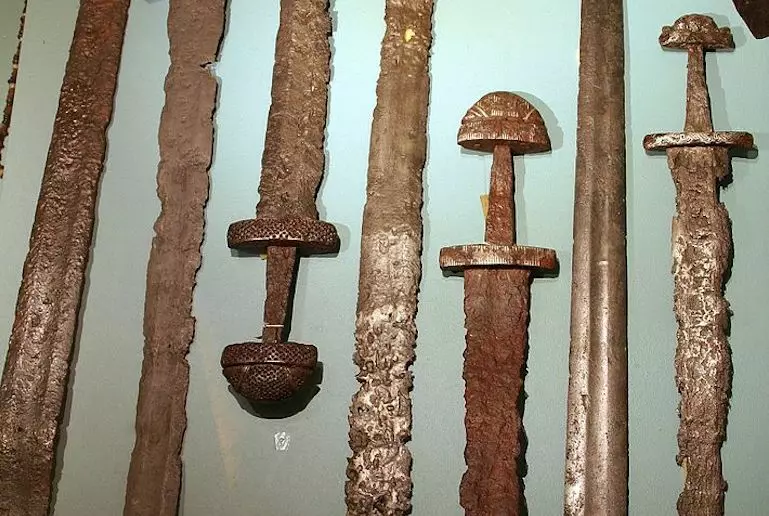During the Middle Ages, combat depended not only on skill with swords or spears, but also on the devastating impact of blunt hand weapons. These tools of war were essential for combating heavily armored enemies, as they didn't need to cut or pierce; they simply crushed, dented, or caused internal trauma.
Below, we explore the main medieval blunt weapons, their functions, characteristics, and evolution.
Clubs and Maces: Deadly Simplicity
The medieval mace is one of the oldest and most effective blunt weapons.
Composed of a wooden or metal handle and a heavy head (stone, iron, bronze or steel), its use was based on pure brute force.
Unlike a hammer, the head of the sledgehammer is radially symmetrical, allowing it to strike effectively from any angle.

Flanged mace
An evolution of the simple mace was the flanged mace, also known as the fluted or finned mace, which incorporated prongs or raised metal edges to penetrate armor.
Widely used between the 12th and 15th centuries, it was feared for its ability to cause crushing damage, even through steel.

Plançon a picot
There was also the plançon a picot, a two-handed mace with a point at its top, used mainly by infantry soldiers.
This weapon combined power with penetration.

Morning Stars: Spikes at Dawn
The morning star is a weapon similar to the mace, but with a metal spiked head.
It usually includes a long central spike, useful for penetrating lighter protections.
Types of morning star
- Military: Professionally manufactured, used by regular troops.
- Peasant: handmade by militiamen, using local materials.
- Decorative: used in ceremonies, with gold or silver inlays.
The length varied according to use: infantry versions were longer, while cavalry versions had shorter handles.

Holy water sprinklers: the people's weapon
The so-called holy water sprinkler, due to its resemblance to the liturgical aspergillus, was an English variant of the morning star.
Its head, reinforced with short, thick spikes, was effective against shields and armor. Widely used in the 16th century, it usually had a reinforced handle and a solid, simple structure.
Flails: the improvised weapon
The military flail (also known as a "ball and chain") consisted of a handle attached by chains to one or more spiked balls.
Although its historical use is less documented than that of other weapons, it was popularized by Victorian literature and is common in medieval fantasy iconography.
It is believed that its origin is in the agricultural flail, adapted by peasants in revolts and popular militias.
Its use required skill, but it was feared for its unpredictability and the brutal damage it inflicted.

Warhammers: Precision and Brutality
The medieval warhammer was developed to counter the advance of plate armor. Its impact could cause fractures, stun, and even break through weak areas of the armor.
Types of hammers
- Long hammer: used against riders from the ground.
- Short hammer: ideal for hand-to-hand combat or on horseback.
Many models included a spike or blade opposite the hammer, useful for hooking armor or causing focused damage.

Rider's Peaks: The Spear of the Dry Blow
The rider's pick, a weapon originating in the Islamic world, resembled a hammer with a long, curved prong, useful for penetrating chain mail and armor.
Although powerful, its weight and tendency to become embedded in the enemy made its continuous use difficult.
It was also used as a throwing weapon.

Forcefulness that left its mark
Blunt hand weapons played an essential role on medieval battlefields. Against the toughness of armor and the brutality of close combat, maces, hammers, and flails offered an effective, economical, and simple response.
Although many of these weapons disappeared with changes in military tactics, their legacy lives on in museums, literature, historical reenactments, and heraldic shields.









